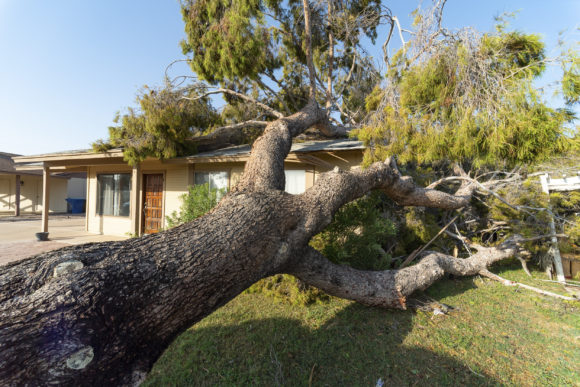Just Because It’s Not Covered Doesn’t Mean It’s Not Covered … The Entirety of Contract Doctrine – Part 1
An invariable practice of the late, great Don Malecki, CPCU, was that, when serving as an expert witness in a contested claim or writing an article about a coverage issue, the entire policy had to be reviewed before reaching a conclusion about coverage. Entirety of contract is a fundamental principle of contract analysis and not just insurance contracts.
However, over the years, I’ve been involved in reversing so many claim denials where the adjuster failed to review the entire policy that I created a webinar called “Just Because It’s Not Covered Doesn’t Mean It’s Not Covered” that examines multiple examples of such erroneous denials.
In most of these claims, if you examined only the language excerpted from the policy that was used as a basis for the denial, the denial appears to be correct. However, further investigation of the policy often reveals that the claim was indeed covered. Sometimes coverage was found in a separate coverage grant in the policy, while other times the cited language was modified or clarified in some way by another provision in the policy.
This month, I’ll examine a commercial lines claim that illustrates the latter situation where the adjuster failed to read a definition within the context of an exclusion. Next month, we’ll review a personal lines claim where the adjuster was searching, with apologies to Johnny Paycheck, for coverage in all the wrong places.
This month’s claim example comes from an astute agent who recognized that an adjuster’s denial was based on an incomplete analysis of the insurance contract.
A tree service company was using a power crane mounted on the back of a truck to lift a downed tree from a structure. The boom on the crane broke and the tree fell onto an adjacent structure. The adjuster denied the claim for damage to the structure under the insured’s 2013 ISO CGL policy on the basis that the vehicle was an “auto” and not “mobile equipment,” and, therefore not covered by the CGL policy. The agent contested the claim denial.
Normally, a power crane mounted on a truck would be considered “mobile equipment” under this part of the “mobile equipment” definition:
“Mobile equipment” means any of the following types of land vehicles, including any attached machinery or equipment:
d. Vehicles, whether self-propelled or not, maintained primarily to provide mobility to permanently mounted:
(1) Power cranes, shovels, loaders, diggers or drills; or …
However, the adjuster pointed out this language in the last paragraph of the very lengthy definition:
However, “mobile equipment” does not include any land vehicles that are subject to a compulsory or financial responsibility law or other motor vehicle insurance law where it is licensed or principally garaged. Land vehicles subject to a compulsory or financial responsibility law or other motor vehicle insurance law are considered “autos.”
The vehicle in question was licensed for use on public roads and was subject to motor vehicle insurance laws so, under this provision of the definition of “mobile equipment,” the vehicle is indeed an “auto” and the CGL policy has an “auto” exclusion. So, since the vehicle is an “auto,” the adjuster’s presumption was that its use was excluded by the policy. The adjuster made this presumption because he failed to actually read the “auto” exclusion in the policy.
However, just because a vehicle is an “auto,” that doesn’t mean the “auto” exclusion applies to the specific facts and circumstances of the claim. You have to apply the definition within the context of the actual “auto” exclusion in the policy. The “auto” exclusion has exceptions that include the following [EMPHASIS added]:
This exclusion does not apply to:
(5) “Bodily injury” or “property damage” arising out of:
(a) The OPERATION of machinery or equipment that is attached to, or part of, a land vehicle that would qualify under the definition of “mobile equipment” IF it were NOT subject to a compulsory or financial responsibility law or other motor vehicle insurance law where it is licensed or principally garaged; or …
While it’s true that the CGL policy generally covers “mobile equipment” but excludes “autos” and that a vehicle with a mounted power crane that is subject to a motor vehicle insurance law is an “auto” and not mobile equipment, that doesn’t mean that the apparatus is excluded based solely on the definition. You have to consider the definition within the context of the exclusion.
Generalizations like “CGL policies don’t cover the use of autos” have no use in insurance contract analysis. You have to read the precise language of the policy form and it’s clear when you read the definition within the context of the actual exclusionary language that the policy excludes the road use of the vehicle, but not the actual operation of the power crane.
When confronted with claim denials like this, I always ask myself, “What would Don Malecki do?” Tune in next month when we explore how a personal lines claim might be rightfully denied under one part of a policy, but covered elsewhere in the policy. All you have to do is RTFP!
Was this article valuable?
Here are more articles you may enjoy.



 Consumer Acceptance of Telematics Widens, Says Survey
Consumer Acceptance of Telematics Widens, Says Survey  Experian: AI Agents Could Overtake Human Error as Major Cause of Data Breaches
Experian: AI Agents Could Overtake Human Error as Major Cause of Data Breaches  New York Governor Hochul Vows to Tackle Insurance Affordability, Litigation and Fraud
New York Governor Hochul Vows to Tackle Insurance Affordability, Litigation and Fraud  Nearly Half of 100 Largest P/C Insurers Destroy Value: ACORD
Nearly Half of 100 Largest P/C Insurers Destroy Value: ACORD 



